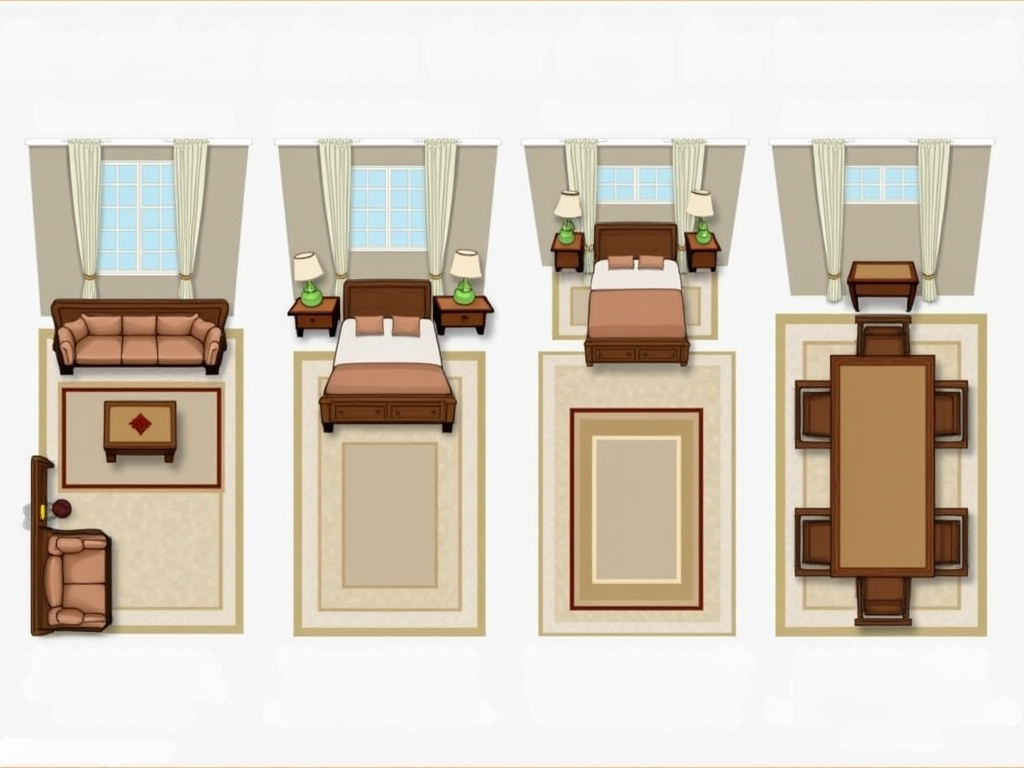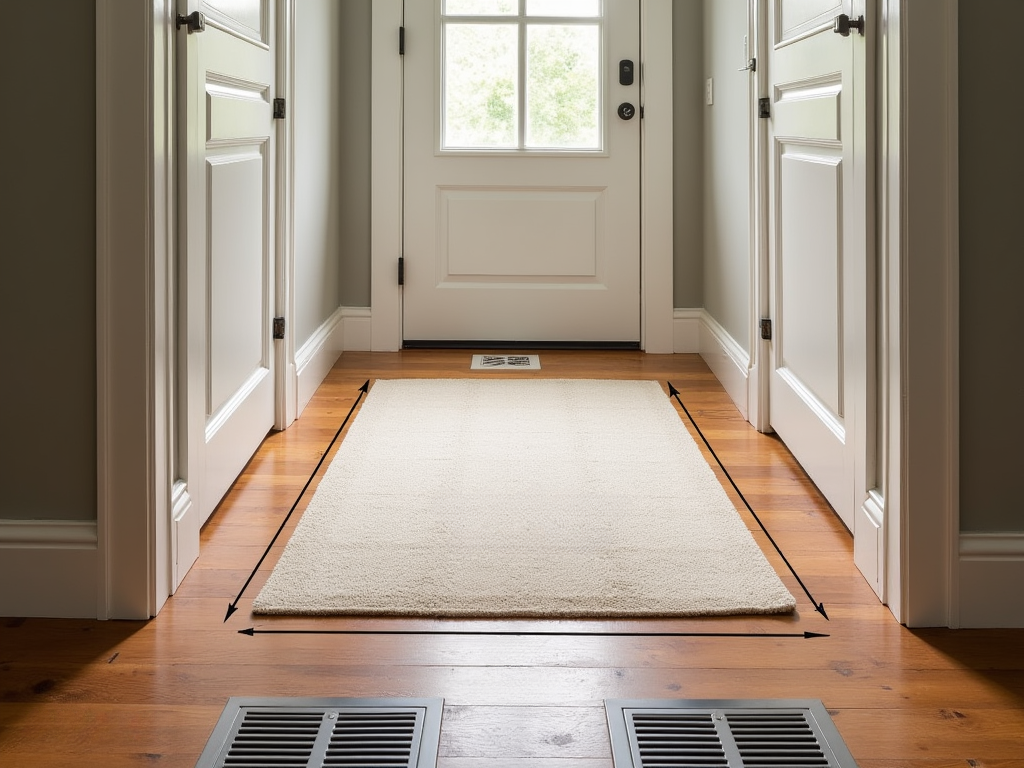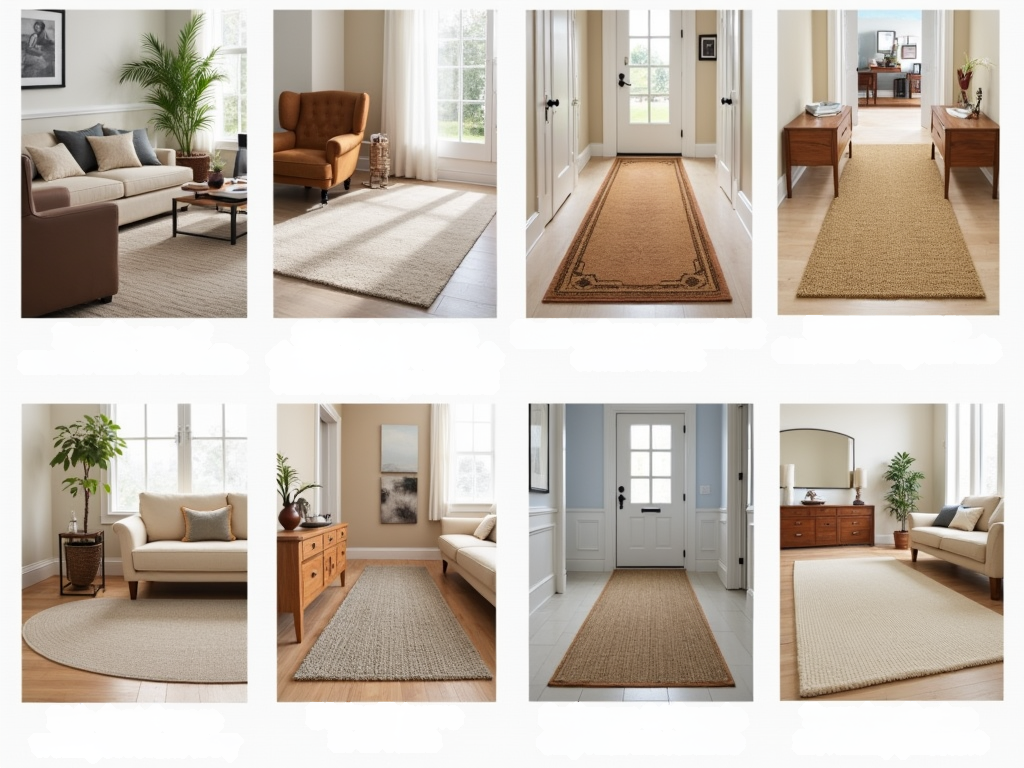
Choosing a rug isn’t just about selecting a pattern or color—it’s a decision that impacts the harmony, comfort, and practicality of your space. From defining zones to softening hard surfaces, a well-chosen rug changes not only how a room looks but also how it functions. Attention to size, materials, and placement ensures your rug blends seamlessly with both the layout and purpose of your home.
Key Takeaways
- Size matters: Pick a rug size proportionate to the room and furniture. For living rooms, ensure that at least the front legs of your seating rest on the rug. In bedrooms, larger rugs should extend beyond the bed to frame it effectively. For dining rooms, the rug must accommodate chairs being pulled out without catching.
- Placement: Acts as an anchor, helping tie furniture arrangements together. For larger, open areas, rugs create distinct “zones,” while irregular layouts benefit from strategic rug placement to unify the space.
- Durability: In high-use spaces, durable fibers matter. Wool offers longevity and softness, making it a great pick for family rooms or hallways. Sisal or jute works well in busy areas but requires care with moisture. Flatweave options shine in dining rooms, as they’re easier to clean and less prone to trapping crumbs.
- Functionality: Pay attention to functionality by ensuring doors open freely and pathways aren’t blocked. A properly placed rug shouldn’t create tripping hazards or interfere with vents and airflow.
- Layering: Can be both stylish and practical. Combine a large neutral rug—like a jute or sisal base—with a smaller, patterned piece to add richness and warmth. This approach also allows flexibility in experimenting with colors and designs without overwhelming the space.
Choose a rug with thoughtful consideration, and it will bring not only comfort but also practicality, binding your space together beautifully.
Ideal Rug Sizes for Various Spaces
Choosing the right rug size depends on the room’s dimensions and furniture layout. Here’s how to match rugs with specific spaces:
Living Rooms
For most living rooms, standard rug sizes like 8’ x 10’ or 9’ x 12’ work well. If the room is smaller (under 11′ x 13′), a 6’ x 9’ rug can suffice, but avoid anything smaller like 5’ x 8’, as it might make the room appear tighter. Ensure the rug extends at least 6-8 inches beyond the sofa on either side, with front legs of chairs and couches resting on it. Maintain clear walkways of 18-36 inches between furniture pieces.
Bedrooms
A 9’ x 12’ rug suits King-sized beds, while an 8’ x 10’ complements a Queen bed. Let the rug stretch 18-24 inches past the foot and sides of the bed, covering the nightstand area for cohesive placement.
Dining Rooms
Use an 8’ x 10’ or 9’ x 12’ rug large enough to let chairs fully slide back without leaving the rug. Add at least 2 feet to your dining table’s dimensions to ensure proper coverage.

Guidance on Rug Placement for a Cohesive Aesthetic
When arranging a rug, its placement can completely transform how a room feels and functions. Start by anchoring your furniture. Make sure all furniture legs—or at the very least, the front two legs—rest on the rug. This simple approach creates a balanced and unified appearance, especially in open-concept layouts. It visually connects your seating area, offering a polished and intentional design.
Think about the shape of the room, too. A horizontal rug orientation can make small, compact rooms appear wider. For long, narrow spaces, use more than one rug to break it into distinct areas. For example, you could define a seating zone with one rug while another highlights a dining spot or reading nook. This strategy helps avoid the tunnel effect and adds personality.
Always match the rug placement to the proportions of the room rather than focusing solely on your furniture layout. A rug that’s too small can feel disconnected, no matter how carefully you arrange the furniture. If your space is generous, a larger rug will anchor everything cohesively without feeling out of place. Get a rug that works with the room’s dimensions for the best balance.

Tailor Rug Choice to Specific Practical Needs
Paying attention to practical details ensures a rug fits your space both visually and functionally. Start with areas around doors and high-traffic pathways. Opt for short pile rugs in these zones, as they’re less likely to catch or hinder door movement. Check that doors swing freely over the rug without scraping. Maintain an open flow by leaving 18 to 30 inches of space around the rug for unrestricted walking paths, especially in entryways or busy hallways.
Positioning rugs near walls or floor features also requires thought. Leave 3 to 6 inches of space between the rug’s edge and the walls to prevent the area from feeling cramped. This gap visually frames the room and keeps furniture arrangements balanced. Rugs near air vents, floor grates, or heaters need at least an inch of clearance. This avoids obstructing airflow or creating a safety hazard with heating elements.
Taking these small steps makes a big difference. You’re not only adding a decorative element but also preserving your space’s comfort and functionality.

Match Material to Room Use and Maintenance Preferences
The right rug material makes all the difference in practicality and longevity. Start by considering the room’s purpose and how much wear and tear it will experience.
Durable materials like wool or sisal excel in high-traffic areas like entryways or living rooms. Wool, being naturally resilient, maintains its structure even with daily foot traffic. Sisal, made from plant fibers, is another sturdy choice that holds up against constant use while adding a textured, earthy feel.
In moisture-prone areas such as kitchens or bathrooms, go with materials that handle dampness well. Wool works surprisingly well here due to its natural wicking properties, resisting mold when properly maintained. Avoid jute or cotton, as they tend to absorb moisture and wear out quicker in these conditions.
For dining areas, practicality often trumps plushness. Flatweave rugs are the smart option, offering easy cleaning and allowing chairs to slide without snagging. These rugs also resist crumbs and spills better than shaggier options. Stay away from thick piles or shags in places where food is involved—they trap dirt and spills, making them harder to clean.
Balancing style with functionality ensures your rug not only complements your space but also withstands daily demands.

Layering for Design Flexibility
Layering rugs can completely transform a space, offering versatility and style. It’s perfect for smaller or heirloom rugs that might otherwise feel out of place in a larger area. By placing a vibrant or patterned rug over an affordable natural fiber base, such as sisal or jute, you add depth and texture without overwhelming the room.
This technique allows you to highlight cherished pieces like vintage or handmade rugs. Choose neutral bases to complement the colors and patterns of your top rug. For example:
- Pair a bold patterned rug with a simple, textured jute base for balance.
- Use layering to unite various design elements in open-plan spaces by creating visually distinct zones.
With layering, you’ve got freedom to mix textures, colors, and materials, adapting to decor changes over time while creating a grounded yet dynamic look.

Sources:
The Easy Way To Choose The Right Rug For Your Space by Loomy Home
Choosing THE RIGHT Rug Size For Every Room by Style by Emily Henderson
Designer Trick : Selecting the Right Rug by Room For Tuesday
How to Choose the Right Rug | Area Rug Size Guide by Soho Home
Choosing the Right Living Room Area Rug for Your Home by The Spruce
Disclosure: As an Amazon Associate, I earn from qualifying purchases.





